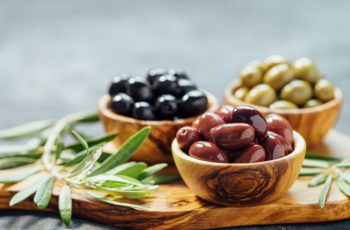
What does guava taste like? This question often arises when encountering this remarkable tropical fruit. With its rich history dating back to ancient civilizations in Peru (as early as 2500 BCE), guava has captured the hearts and taste buds of people worldwide. From its basic taste profile to the unique characteristics of different varieties, the complex and delightful flavors of guava offer an exciting journey into tropical fruit experiences.
What Does Guava Taste Like?

The Basic Flavor Profile of What Does Guava Taste Like?
If you’ve never tasted guava before, you might be wondering what adventure awaits your taste buds. Imagine biting into a fruit that magically combines the sweet succulence of a ripe pear with the fragrant brightness of a fresh strawberry. That’s guava for you, but it’s also so much more.
The flavor of guava is truly unique and can be described as a harmonious blend of:
- Sweet and tropical base notes
- Subtle tartness that varies with ripeness
- Musky, floral undertones
- Delicate hints of citrus
- A complex depth that can remind you of papaya or mango
What makes guava particularly special is its aromatic quality. As the fruit ripens, it develops an intensely sweet, musky fragrance that perfumes the air around it. This aroma isn’t just for show; it contributes to the overall taste experience, making guava a truly multi-sensory delight.
Read more: What Does Jackfruit Taste Like? Revealing Facts!
The Texture Experience
The taste of guava isn’t just about flavor; texture plays a crucial role in the overall experience. When you bite into a perfectly ripe guava, you’ll encounter:
- A soft, creamy flesh similar to a ripe pear
- A slightly grainy texture that adds to the juicer
- The juicy pulp that melts in your mouth
- Small, edible seeds that provide a subtle crunch
- A tender skin that can be eaten along with the flesh
Different Varieties, Different Flavors

Different Varieties and different Flavors of Guava
What Does Pink Guava Taste Like?
Pink guava, with its stunning rosy flesh, offers a slightly different taste profile from its counterparts. Known as Tropical Pink in some regions, this variety features:
- A milder sweetness compared to other varieties
- An incredibly strong, pleasant aroma
- A texture that can range from smooth to slightly coarse
- A beautiful pink flesh that makes it visually appealing
- A balanced flavor that works wonderfully in desserts and smoothies
The pink variety has gained particular popularity in recent years, especially in the beverage industry, where its striking color and pleasant taste make it a favorite for juices and cocktails.
What Does Strawberry Guava Taste Like?
Strawberry guava, a distinct variety that’s sometimes confused with pink guava, offers a unique flavor profile:
- More pronounced strawberry notes
- Generally sweeter than regular guava
- A more concentrated flavor in a smaller package
- A particularly aromatic quality
- A texture that’s slightly firmer than other varieties
What Does Guava Juice Taste Like?

What Does Guava Juice Taste Like?
Guava juice deserves its section because it offers a different but equally delightful taste experience from the fresh fruit. When you drink guava juice, you’ll notice:
- A more concentrated sweetness
- A smoother texture without the graininess of fresh fruit
- A bright, tropical flavor that’s refreshing and crisp
- A perfect balance of sweet and tart notes
- An aromatic quality that makes it stand out from other fruit juices
The taste of guava juice can vary depending on:
- The variety of guava used
- Whether it’s pure jur from concentrate
- If it’s blended with other fruits
- The ripeness of the fruits when juiced
- Whether additional sweeteners have been added
A Taste Tour of Different Guavas
Lemon Guava (Apple Guava)
As the most common variety worldwide, this type offers:
- A sweet base with distinct lemony notes
- A strong, pleasant aroma
- A satisfying flavor intensity
- Great versatility for both fresh eating and cooking
Tropical Yellow (Mexican Cream)
Known as one of the sweetest varieties:
- Intensely sweet flavor profile
- Creamy white skin with yellowish-red flesh
- Higher liquid content than other varieties
- A popular for dessert preparations
Tropical White
Offers a classic guava experience:
- Traditional guava flavor
- Higher water content gives it a juicer texture
- Yellow flesh beneath the white skin
- Well-balanced sweetness
Malaysian Red
While often used for decoration, it offers:
- Mild sweetness
- Beautiful red skin and pink flesh
- Subtle flavor notes
- Pleasant aroma
How Ripeness Affects Guava Taste
How Ripeness Affects Guava Taste
The flavor of guava dramatically changes as it ripens:
Unripe Guava
- Predominately tangy and acidic
- Firmer, tougher texture
- Less aromatic
- More starchy taste
- Can be slightly bitter
Perfect Ripeness
- Peak sweetness
- Balanced flavor profile
- Soft, juicy texture
- Strong, sweet aroma
- Most complex flavor notes
Overripe
- Intensely sweet
- Very soft texture
- Strongest aroma
- May develop fermented notes
- More delicate to handle
Culinary Applications and Flavor Pairings
The versatile taste of guava makes it perfect for various culinary applications:
Sweet Applications
- Jams and jellies (utilizing its natural pectin)
- Desserts and pastries
- Ice creams and sorbets
- Smoothies and juices
- Fruit salads
Savory Applications
- Meat glazes
- Barbecue sauces
- Chutneys
- Savory sauces
- Marinades
Perfect Flavor Pairings
Guava pairs beautifully with:
- Cream cheese
- Citrus fruits
- Tropical fruits like mango and pineapple
- Spices like cinnamon and cardamom
- Herbs like mint and basil
Expert Tips for the Best Guava Taste Experience
To get the most out of your guava experience, consider these professional tips:
Selection
- Look for fruits that give light to pressure
- Choose ones with a strong, sweet aroma
- Avoid fruits with blemishes or dark spots
- Select based on your intended use (firmer for cooking, softer for fresh eating)
Enhancement
- Add a pinch of salt to enhance sweetness
- Squeeze lime juice for brightness
- Pair with complementary fruits
- Consider temperature (slightly chilled can enhance refreshing qualities)
Storage
- Store unripe guavas at room temperature
- Keep ripe guavas in the refrigerator
- Use within 4 days of ripening
- Freeze properly for long-term storage
Cultural Significance and Regional Preferences
The taste of guava is appreciated differently across cultures:
- In Latin America: Often eaten fresh with salt or lime
- In Asian countries: Frequently used in both sweet and savory dishes
- In India: Popular in desserts and preserves
- In the Caribbean: Common in beverages and sauces
Health Benefits Affecting Taste
The nutritional content of guava contributes to its taste profile:
- High vitamin C content adds to its bright flavor
- Natural sugars provide sweetness
- Fiber content affects the texture
- Antioxidants contribute to complex flavor notes
- Minerals add subtle taste elements
Conclusion
The taste of guava is a complex and delightful experience that goes beyond simple flavor descriptions. Whether you’re enjoying it fresh, in juice form, or incorporated into various dishes, guava offers a unique tropical taste that’s both accessible and exotic. From the sweet-tart notes of pink guava to the intense sweetness of the tropical yellow variety, each type provides its special contribution to the world of fruit flavors.
Remember that the best way to truly understand what guava tastes like is to experience it yourself. Don’t be afraid to try different varieties and preparations—each one offers a new perspective on this remarkable fruit’s flavor profile.
Learn More About Grilling
If you want to learn more about grilling, check out these other helpful resources!











